Black women and men contributed to the construction of Brazil.
They are warriors, liberal professionals, artists, athletes and political activists who have made a difference in the country.
We chose 25 black Brazilian personalities that marked the country's history.
1. Aqualtune (c.1600-?) - princess and military commander
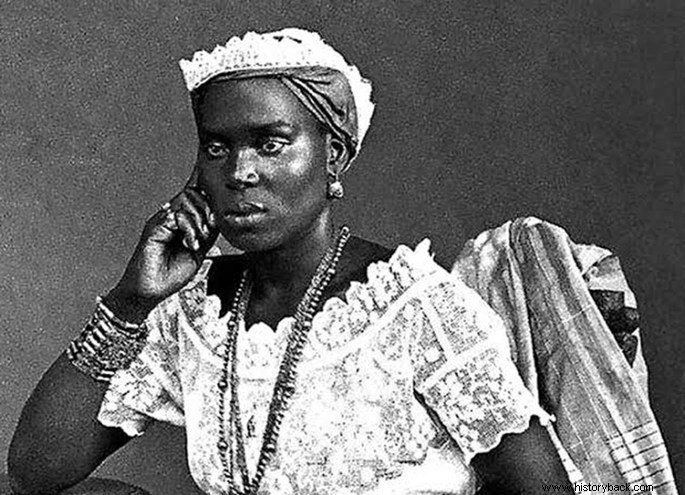
Born in the Kingdom of Congo, Aqualtune was a princess who played an important role in her homeland. She commanded an army of 10 thousand men against the Kingdom of Portugal defending its territory.
Defeated, she was sold as a slave and brought to Alagoas. At the mill where she was a slave, she learned about the existence of Quilombo dos Palmares and fled to the place taking several companions with her.
There she would have three children who would stand out in the fight against slavery:Ganga Zumba and Gana, leaders in Quilombo dos Palmares; and Sabina, Zumbi's mother.
The cause of her death is uncertain, but her deeds helped consolidate Quilombo dos Palmares as a refuge for slaves in the colony.
2. Zumbi dos Palmares (1655-1695) - leader of Quilombo dos Palmares
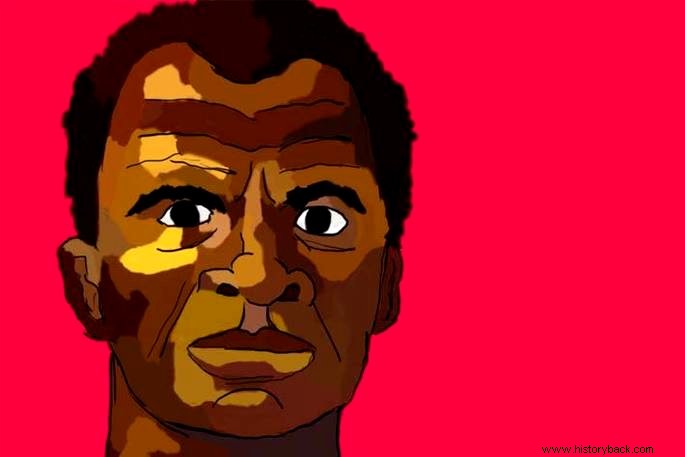
Zumbi dos Palmares was the symbol of the resistance of the slaves who managed to escape from the farms in Alagoas and surroundings.
Zumbi was born in Quilombo and therefore free. However, in one of the raids against the quilombo he was sold to a priest and so, studied Latin and Portuguese.
In this way, he knew about the terrible living conditions that the Africans who were forcibly brought to work on the northeastern mills were subjected to.
He returns to Quilombo and the one leading him was Ganga Zumba. At that time, the place already had a population of 30 thousand people and represented a threat to the Portuguese government. Therefore, they decide to make an offer to surrender without violence.
The proposal is rejected by Zumbi who would have set an ambush for Ganga Zumba or poisoned him. Thus begins a war between the quilombolas, settlers and the Portuguese Crown.
Leading Quilombo dos Palmares, his army was defeated, and Zumbi was captured and killed. His head was exposed in a public square, but his example of struggle was passed on from generation to generation. Zumbi's life became an example for the current black movement.
See also:Zumbi dos Palmares3. Dandara (?-1694) - Zombie's wife
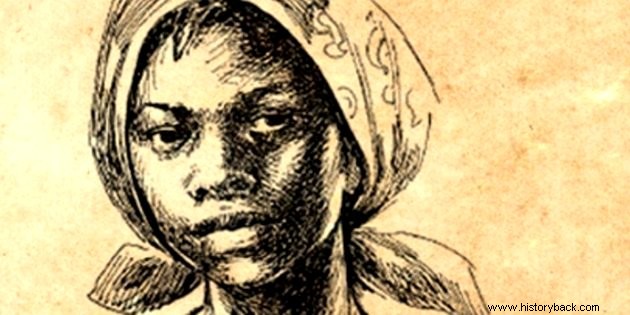
Data on Dandara's life are scarce and it is not certain whether she was born in Brazil or Africa. It is known that she was Zumbi's wife and had three children with him.
In addition, she participated in the resistance against the Portuguese government fighting alongside the troops defending Quilombo dos Palmares. Likewise, she opposed leader Ganga Zumba when the latter wanted to make a pact with the Portuguese government.
Having defeated the army of Quilombo dos Palmares, so as not to be caught by the colonial soldiers, Dandara preferred to commit suicide, throwing himself over a precipice.
4. Aleijadinho (1738(?)-1814) - sculptor and architect
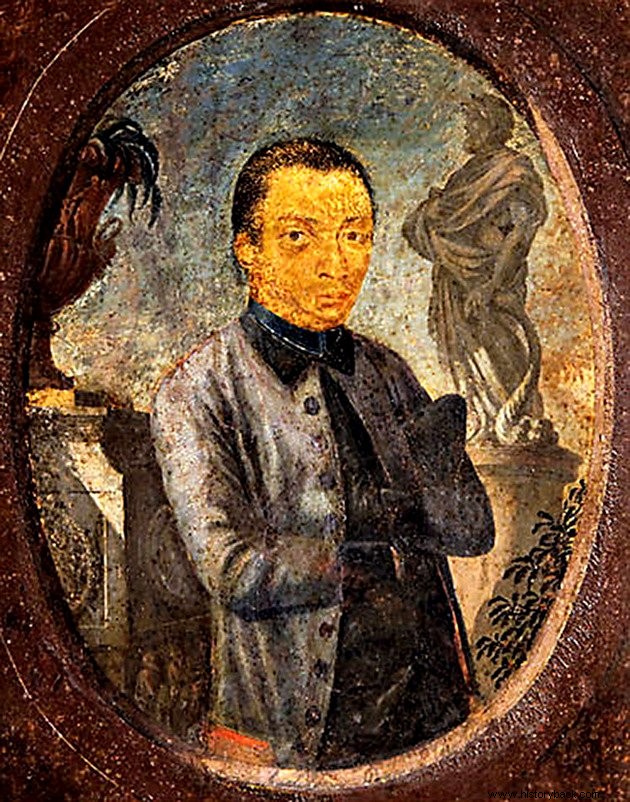
Son of a Portuguese architect and his slave, Antônio Francisco de Lisboa, Aleijadinho, was manumitted by his father. He grew up in an art environment and was able to receive formal education alongside his half-siblings.
Being brown or mulatto, he did not always receive what he was entitled to for his works and many pieces cannot have their authorship confirmed because they lack a contract.
Even so, he was in charge of producing several important pieces for the richest religious orders in the region of Minas Gerais. His works are in cities like Congonhas, Mariana and Sabará and in several Brazilian museums.
He developed a degenerative disease that caused him to lose (or paralyze) his fingers and toes. Even seriously ill he did not stop working and imprinted an unmistakable style to his creations, being recognized as the great Baroque master of the period.
See also:Aleijadinho5. Tereza de Benguela (?-1770) - queen of Quilombo de Quariterê
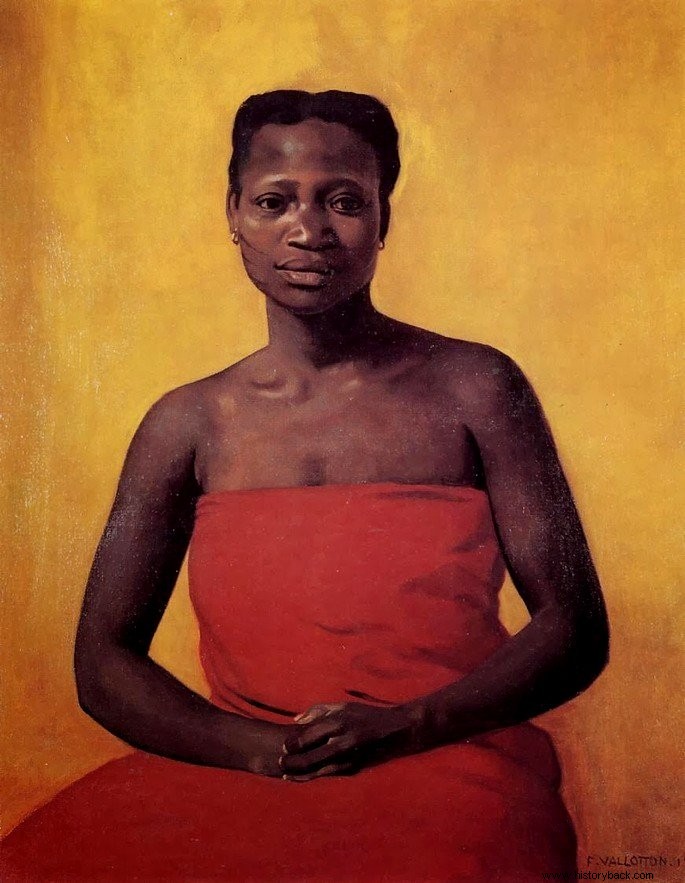
She was the queen of Quilombo de Quariterê, in Mato Grosso. After her companion's death, she led the quilombo's fight against Portuguese soldiers. A great innovation of hers was the institution of a Parliament in the quilombo where the norms that regulated the functioning of the place were discussed.
After having had her army defeated, Tereza de Benguela was killed and beheaded with her head exposed in a public square. In this way, the government intended the punishment to serve as an example so that no one would ever challenge it again.
July 25th, the date of her death, is Black Women's Day in Brazil.
Also read:Quilombos
6. Mestre Valentim (1745-1813) - landscaper and architect
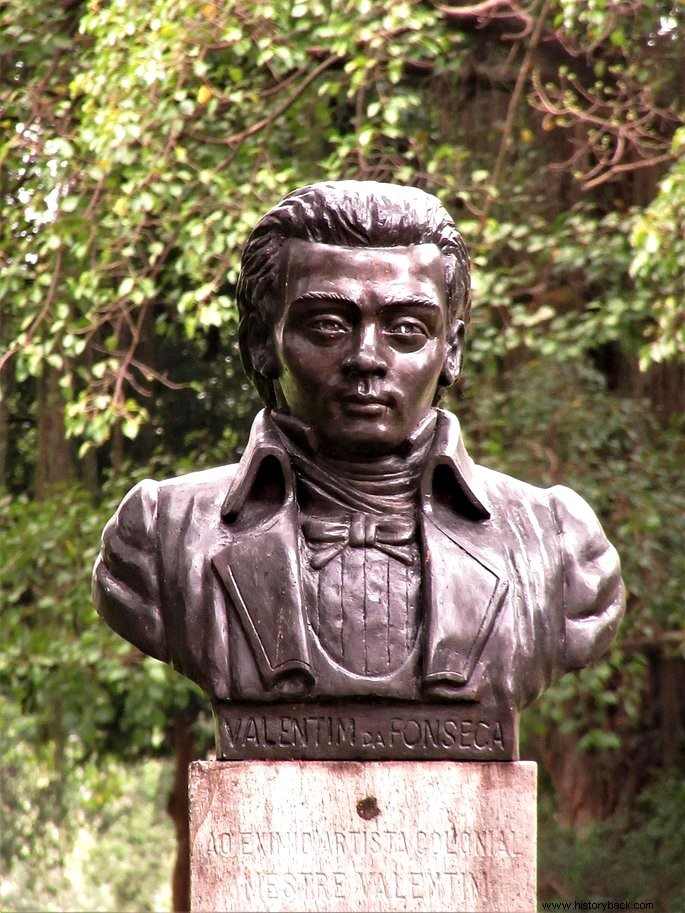
Valentim da Fonseca e Silva, better known as Mestre Valentim, was the son of a diamond contractor and a black woman. He was born in Serro, Minas Gerais and later, Valentim was taken to his father in Lisbon where he studied.
In Brazil, he settled in Rio de Janeiro, then capital of the colony. He provided service to the great religious orders and carried out work for the Monastery of São Bento, the Church of Santa Cruz dos Militares and the Church of São Pedro Clérigos (already demolished).
Called "Aleijadinho carioca" for his talent, he was also the author of the original layout of Passeio Público and Chafariz das Marrecas, both in Rio de Janeiro.
However, his best-known work is the fountain located in the current Praça Quinze, where hundreds of slaves collected water to supply their homes.
7. Father José Maurício (1767-1830) - musician and composer
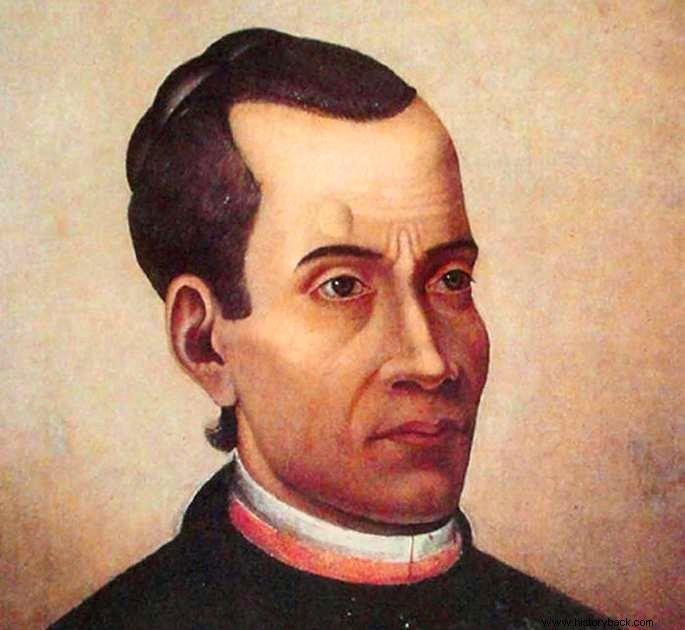
Born in Rio de Janeiro to freed parents, José Maurício Nunes Garcia followed an ecclesiastical career in order to have a formal education. In addition, he studied music, composition and conducting, being an expert organist.
With the arrival of the Royal Family to Brazil, in 1808, the cultural life of Rio de Janeiro underwent a considerable increase.
Prince Regent Dom João, a great admirer of music, named him Master of the Chapel and made him a knight of the Order of Christ, one of the most traditional Portuguese orders.
He composed, above all, religious music that exactly reflects the transition from baroque to classicism that European music was going through.
With the celebrations of the bicentennial of the Royal Family in 2008, the work of José Maurício Nunes Garcia was rediscovered. Thus, several recordings by Brazilian and international orchestras emerged that allowed their dissemination to new generations.
8. Maria Firmina do Reis (1822-1917) - writer and teacher
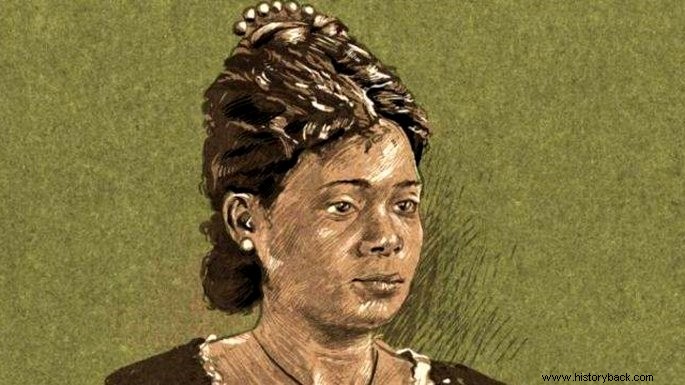
Born in Maranhão, Maria Firmina dos Reis can be considered a pioneer in several fields.
She was the first woman to pass the public tender as a teacher, to found a coeducational school and to write a novel "Úrsula" . This book would anticipate the genre of abolitionist literature that would be fashionable with "Escrava Isaura" , by Bernardo Guimarães (1825-1884).
She would publish in 1871 a short story with the same theme "The Slave" and would gather his poems in the collection "Cantos à bordera" .
Maria Firmina was completely forgotten and silenced from the History of Brazil, but recent research has shed light on her work and life.
See also:Abolitionism9. Luís Gama (1830-1882) - writer and political activist
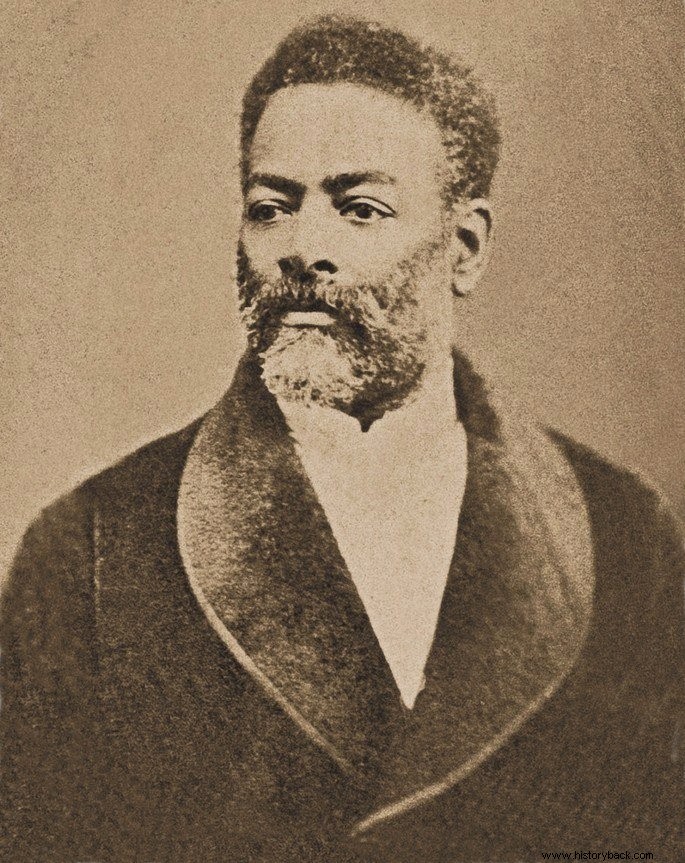
Born in Bahia to a freedwoman and an impoverished Portuguese, Luís Gama was born free, but was sold into slavery by his father who was in debt.
He went to São Paulo at age 10 and worked as a domestic slave. He learned to read at 17, and by this time he was able to prove to the courts that he was unjustly held as a slave and that he should therefore be set free.
Once free, Gama became a rábula, a lawyer without a degree who pleaded specific causes. In his case, Luís Gama managed to free more than 500 slaves claiming that all blacks arriving in Brazil after 1831 should be free, as the Feijó Law said.
An abolitionist writer, Luís Gama's funeral was a true event in São Paulo attended by 4000 people.
In 2015, the Brazilian Bar Association (OAB) posthumously granted him the official title of lawyer.
10. André Rebouças (1838-1898) - engineer and political activist
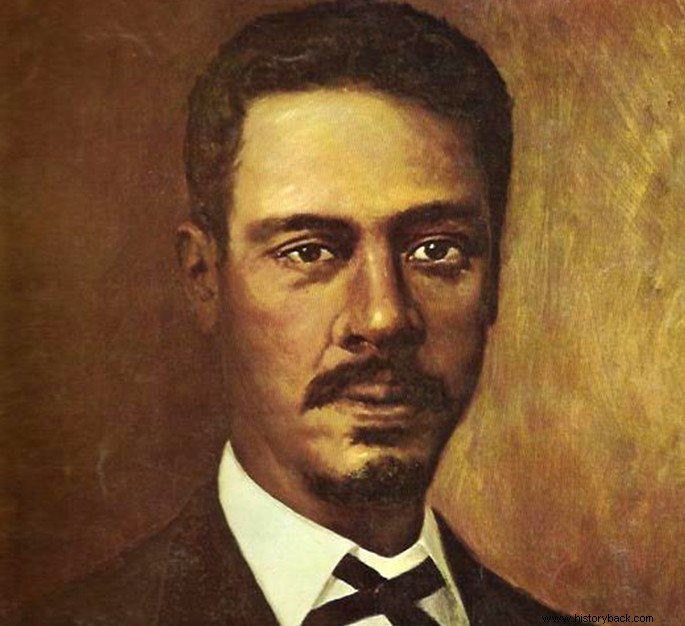
Born in Bahia, André Rebouças was the son of an advisor to Emperor Dom Pedro I and studied engineering abroad.
He built docks in the ports of Salvador, Rio de Janeiro and Recife. He proposed means to improve the water supply of the capital of the Empire and planned railway lines together with his brothers Antônio and José.
Abolitionist, friend of the Imperial Family, he was one of the founders of the "Brazilian Society Against Slavery". Princess Isabel caused a scandal when she danced with André Rebouças at court balls making her abolitionist position clear.
A monarchist, he accompanied the imperial family in their exile in Lisbon and from there he left for Angola.
11. Francisco José do Nascimento (1839-1914) - sailor and political activist
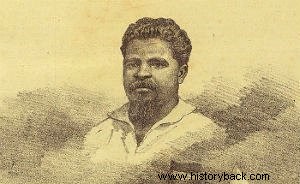
Born in Ceará, son of fishermen, he learned the craft of the sea from an early age and worked as a chief practitioner. Abolitionism spread throughout the country and in Ceará it had the decisive support of the jangadeiros.
In 1881, the jangadeiros, led by Francisco do Nascimento, refused to transport slaves to the south of the country. In this way, trade came to a standstill.
The jangadeiro act ran across the country and was hailed by abolitionists as a heroic gesture. From then on, his nickname would be "Dragon of the Sea" and would go down in the history of the state and the country.
Ceará was the first province in Brazil to abolish slavery in 1884.
12. Machado de Assis (1839-1908) - writer, journalist and poet
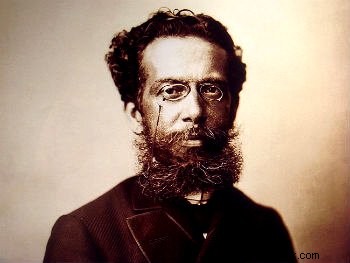
Born in Rio de Janeiro, Joaquim Maria Machado de Assis was born into a poor family. From an early age, the boy was interested in books and learned French, a language with which he would write some poems.
He was a civil servant in several ministries, while developing his literary activity by publishing chronicles and short stories in newspapers.
Even so, he would write nine fundamental novels for Brazilian literature, among which "Dom Casmurro" and "Memórias Póstumas de Brás Cubas" stand out.
In addition, he founded the Academia Brasileira de Letras, and was its first president. The institution still plays an important role in the dissemination of the Portuguese language and has its headquarters in Rio de Janeiro.
See also:Machado de Assis:biography and works13. Estêvão Silva (1845-1891) - painter, draftsman and teacher
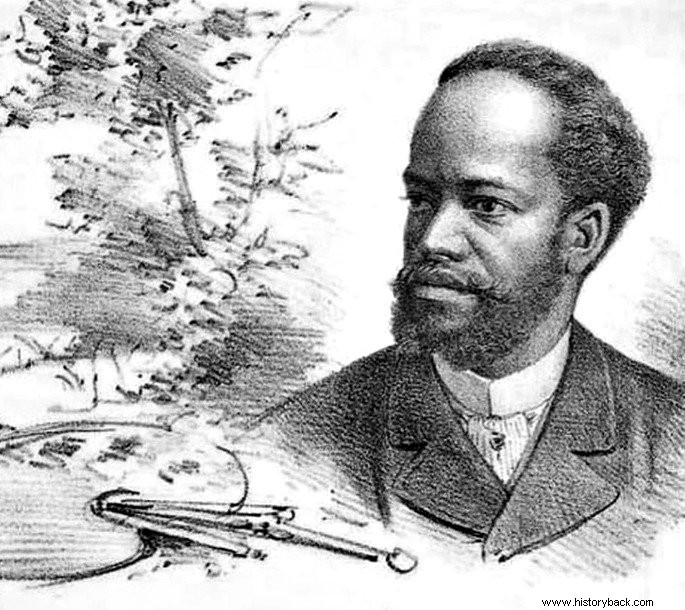
Born in Rio de Janeiro, Estêvão graduated as a painter at the Imperial Academy of Fine Arts. The Academy received a large number of blacks and the children of freedmen and Estêvão Silva is considered the greatest of them all.
He specialized in painting still lifes, and the critic Gonzaga Duque observed that "no one was able to paint them as well as Estêvão Silva ". Equally, he portrayed landscapes and religious figures.
Although forgotten by Brazilian historiography, Estêvão Silva participated in the Grimm Group, which renewed Brazilian landscaping in the 19th century.
On Boa Viagem beach, in Niterói (RJ), the members painted under the guidance of the German Georg Grimm. Artists such as Antônio Parreiras and França Júnior, among others, took part.
The Afro Brasil Museum, in São Paulo, held an exhibition to rescue the figure of this important character.
See also:Main Features of Afro-Brazilian Culture14. José do Patrocínio (1853-1905) - pharmacist and political activist
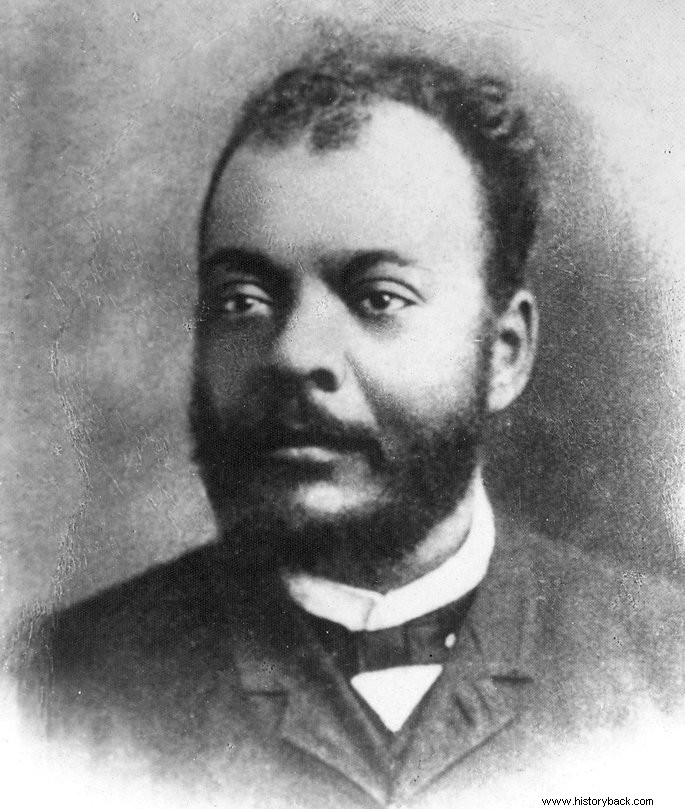
Born in Campo dos Goytacazes (RJ), José do Patrocínio went to the capital of the Empire to study Pharmacy while working at Santa Casa de Misericórdia.
However, he soon left the laboratory for the newsroom where he passionately advocated the end of slavery.
With Joaquim Nabuco, in 1880, he founded the Brazilian Society Against Slavery. In addition to political rallies, the organization raised money for manumissions and facilitated slave escapes. Likewise, he ran for and won the election for councilor of Rio de Janeiro in 1886.
Signed the Lei Áurea, in 1888, Patrocínio goes to Paris, from where he returns with the first car in the city of Rio de Janeiro. Likewise, he invests his savings in the manufacture of airships. He dies of tuberculosis at the age of 51.
15. João da Cruz e Souza (1861-1898) - poet and writer
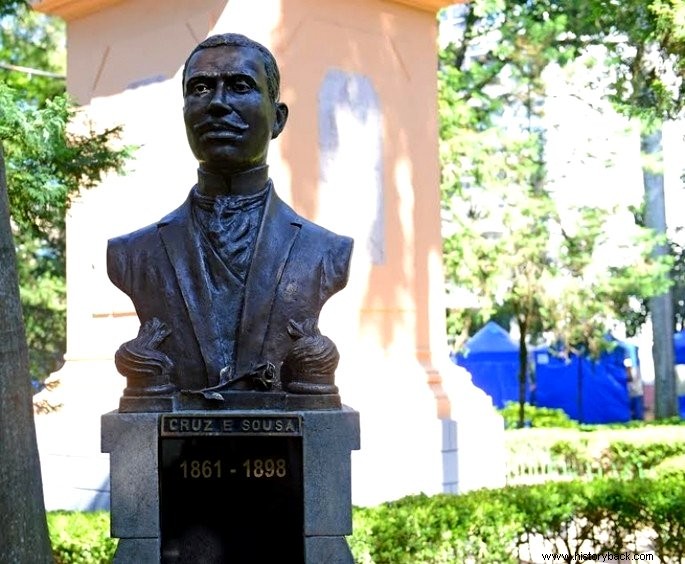
Born in Santa Catarina, he left for the capital, where he was an archivist for the Central do Brasil Railroad. He collaborated with several newspapers and was attentive to the abolitionist cause that was unfolding at that time.
He published three books in his lifetime, but it was his posthumous work "Evocações" that secured him a place among the great Brazilian writers.
His poems are the first of the Symbolist style in Brazil. Despite this, he died just like a romantic poet, as tuberculosis ended his life when he was only 36 years old.
See also:Cruz e Souza16. Nilo Peçanha (1867-1924) - President of the Republic
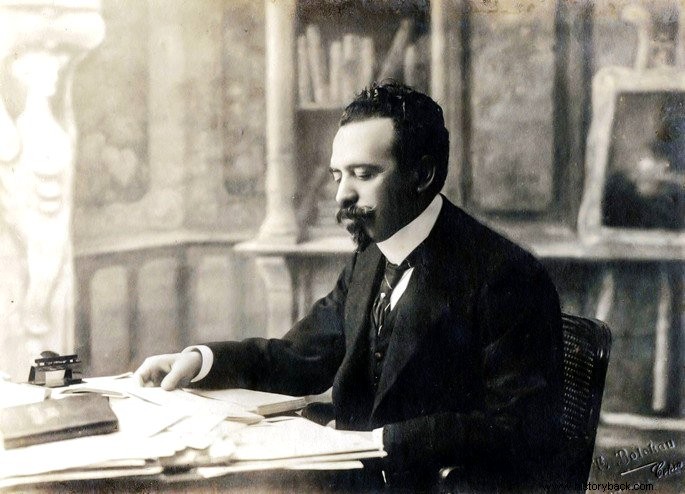
Nilo Peçanha is considered the first Afro-descendant president of Brazil, taking office after the death of Afonso Pena, in 1909. It is important to remember that, at that time, vice presidents were also voted on by voters, independently.
Although his government lasted only one year, during his term Nilo Peçanha created the Ministry of Agriculture, Commerce and Industry, the Indian Protection Service (SPI, predecessor of Funai), and inaugurated the first technical education school in Brazil. .
The politician was also governor of Rio de Janeiro on two occasions, senator and minister of Foreign Affairs.
See also:Nilo Peçanha17. Mother Little Girl of Gantois (1894-1986) - Iyálorixá
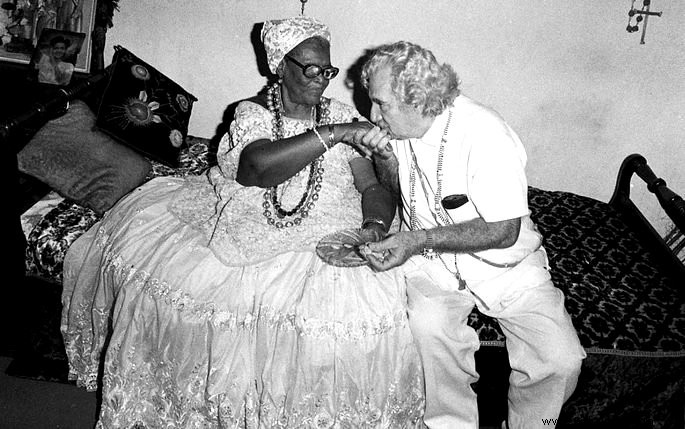
Born in Bahia, Escolástica da Conceição de Nazaré, she was a descendant of a lineage of Iyálorixás, female leaders who command a Candomblé terreiro.
Mãe Meninha do Gantois was chosen at the age of 28 to be the leader of Gantois, a terreiro that had been founded by her great-grandmother.
In the 1930s, Candomblé or Umbanda celebrations were prohibited by law. However, she excelled in making Candomblé known to intellectuals and politicians.
The mother of saint's legion of admirers included names such as Jorge Amado, Dorival Caymmi, Vinicius de Moraes, Caetano Veloso, Maria Bethânia, Gal Costa, etc.
Thanks to her wisdom, the Afro-Brazilian religion gained more visibility and respect.
18. Pixinguinha (1897-1973) - musician, composer and arranger
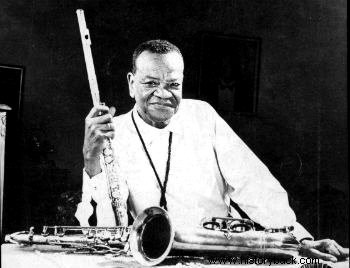
Pixinguinha, nickname of Alfredo da Rocha Vianna Filho, is considered the greatest Brazilian flutist, and still played cavaquinho, piano and saxophone. He started learning music at home, and by the age of 14, he was already performing in nightclubs.
In the silent film era, black artists were not hired for the orchestras that accompanied the film, nor did they play in the cinema hall.
However, with the Spanish flu, Pixinguinha manages to convince a producer to hire his set “Os Oito Batutas” , composed only by black musicians. The group would animate the spectators before the screenings of the films.
Later “The Eight Batons” tour Europe for six months and come back triumphant.
Pixinguinha goes to the radio where he writes arrangements and meets the great singers of the time, such as Orlando Silva, who would record “Carinhoso” . His songs are still in the repertoire of choro, samba and MPB groups, as he is considered the founder of modern Brazilian music.
19. Antonieta de Barros (1901-1952) - teacher, journalist and deputy
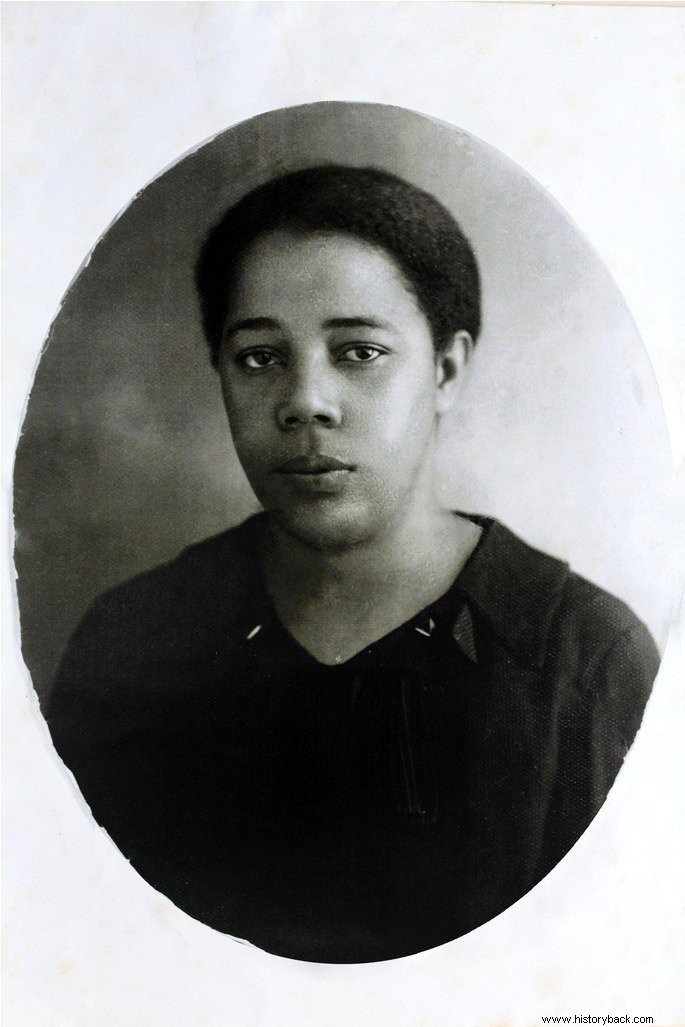
Born in Santa Catarina, Antonieta de Barros was a teacher and dedicated her entire life to teaching.
Likewise, she founded newspapers where she defended feminist ideas. In the 1930s, she entered politics and was the first black state deputy in the country and the first female deputy in the state of Santa Catarina.
Likewise, she was elected in 1934, by the Liberal Party of Santa Catarina, to the assembly that would write the new Constitution. She was on the committees that would report on the Education and Culture and Functionalism chapters.
She was a member of Santa Catarina's legislative assembly until 1937, when the Estado Novo dictatorship began. Later, she would dedicate herself to teaching again, occupying management positions in several schools.
In 1947, she would once again be a state deputy in her state and would author the law that transformed October 15th into "Teachers' Day" in Santa Catarina (Law nº 145, of October 12, 1948).
20. Laudelina de Campos Melo (1904-1991) - domestic servant and political activist
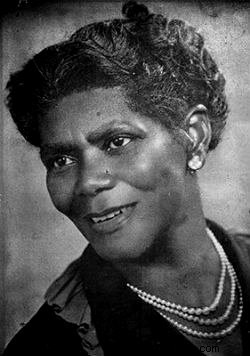
Born in Poços de Caldas (MG), from an early age she helped her mother with housework making sweets to help support the house. Even so, she participated in cultural associations and joined the PCB in the 30s.
Laudelina founded the first Association of Domestic Workers in Brazil, later closed by the Estado Novo.
With the return of democracy, Laudelina continued to fight for the valorization of black culture and domestic work. For this, she helped to found associations of a political and cultural nature.
She also organized demonstrations and petitions for the purpose of pressuring legislators to enact laws favorable to domestic workers.
She left her home in will to the Association she had helped create.
21. Carolina de Jesus (1914-1977) - writer
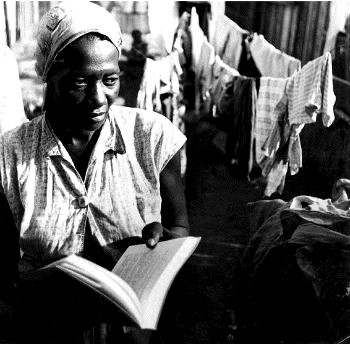
Born in the city of Sacramento (MG), Carolina Maria de Jesus attended school for only two years.
In search of a better life, she went to São Paulo where she lived in the favela of Canindé and supported her three children by selling paper and iron.
In the 60s, the favela would be displaced due to real estate speculation and Carolina narrates the daily life of the place in a diary. There she recounts the ills and the struggle for survival in a raw but poetic language.
Journalist Audálio Dantas, from Folha da Noite, who covered the government action, helps Carolina publish her notes. The book would be released with the title “Eviction Room ”.
The publication becomes an immediate success and is translated into 29 languages. The sequel would follow, where she describes the place of black women within Brazilian society, and “Proverbs ”. Her biography would be published posthumously, in 1986, as “Diary of Bitita ”.
See more about Carolina Maria de Jesus.
22. Abdias do Nascimento (1914-2011) - intellectual, actor and politician
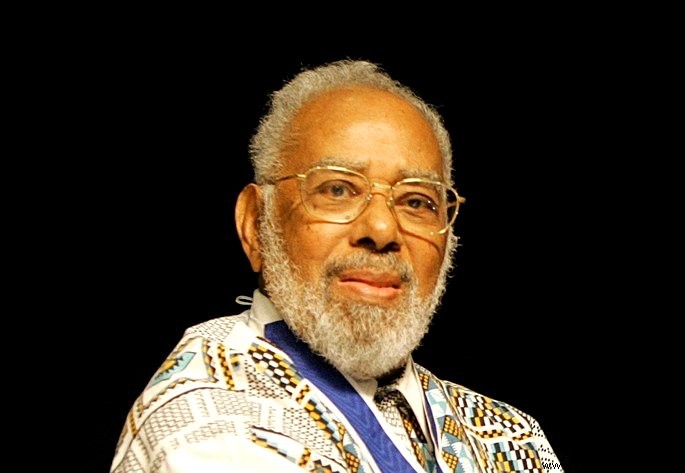
Born in Franca (SP), Abdias do Nascimento was a great precursor in the artistic and political life of Brazil. Founder of the Teatro Experimental do Negro, in 1944, the Museum of Black Art and IPEAFRO, in the 1980s, which dedicated itself to research and dissemination of the history of Africa. He even helped design the Zumbi dos Palmares Memorial, in Alagoas.
Engaged in the black movement in Brazil, he collaborated with the Frente Negra Brasileira. During the military dictatorship (1964-1985) he went to the United States where he was a university professor. Equally, he exercised as a deputy and senator.
Abdias do Nascimento has published several works on themes related to the condition of black people, among which stands out "The Genocide of the Brazilian Black - Process of a masked racism" , from 1978.
A man of diverse talents, Abdias do Nascimento was still an artist and made several works that were inspired by African art. Likewise, he dressed in prints and garments of African origin.
He is also often compared to American pastor Martin Luther King for his commitment to the civil rights of the Afro-descendant population.
23. Adhemar Ferreira da Silva (1927-2001) - Olympic athlete
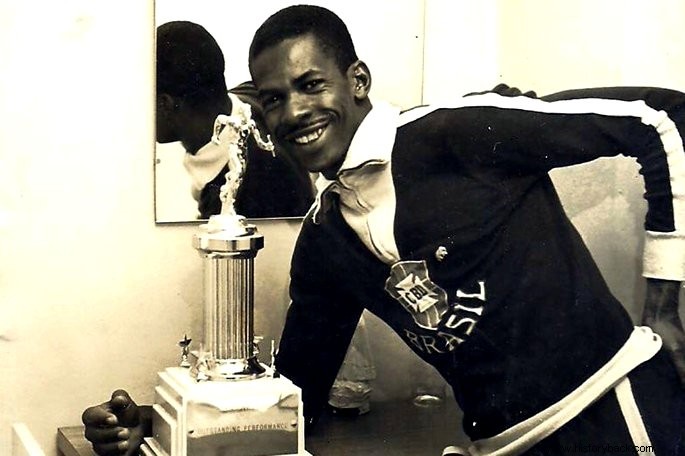
Born in São Paulo, Adhemar was a pioneer of Brazilian athletics in the triple jump category. He defended the colors of São Paulo and Vasco da Gama, in Rio de Janeiro.
His first title was the Brazil Trophy in 1947, and he would continue to shine as a three-time Pan-American and South American champion, breaking several world records.
Consecrated at the Helsinki (1952) and Melbourne (1956) Olympics, he was the first athlete to win a gold medal for Brazil and be a two-time Olympic champion.
In addition, he was a sculptor and participated in the film "Black Orpheus", awarded the Palme d'Or in Cannes in 1959. He graduated in Physical Education, Law and Public Relations. He was even designated cultural attaché in Nigeria, where he would serve from 1964 to 1967.
24. Grande Othello (1915-1993) - actor and singer
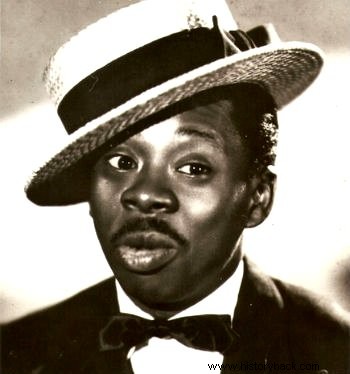
Born in Uberlândia (MG), Sebastião Bernardes de Souza Prata would be the first black Brazilian actor with national and international projection. The nickname came from his singing lessons, as the teacher predicted that he would sing the role of "Othello" by Verdi when he grew up.
His artistic career began on the streets of his hometown, when the boy sang and made fun of passers-by in search of change. When a circus arrived in town, Grande Otelo performed with them and continued on to São Paulo.
Thus began a fruitful career as a theater and film actor, especially in comedies alongside Oscarito.
However, he has also recorded titles with Cinema Novo directors such as "Rio Zona Norte", by Nelson Pereira dos Santos and "Macunaíma", by Joaquim Pedro de Andrade.
He was also the first black actor to act at Cassino da Urca and would later participate in several television shows.
The Estácio de Sá Samba School honored him in 1986 and the Santa Cruz Samba School did the same in 2015. Both associations are from Rio de Janeiro.
25. Ruth de Souza (1921-2019) - actress
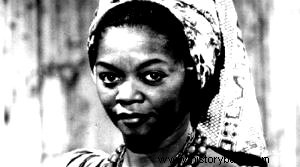
Born in Rio de Janeiro, Ruth lost her father at the age of nine and her mother worked as a laundress to raise her three children. He soon became interested in theater and joined the Teatro Experimental do Negro, by Abdias de Nascimento. He was also very fond of going to the movies and listening to opera together with his mother.
Through the critic Paschoal Carlos Magno, she gets a scholarship to study acting in the United States.
Ruth de Souza was the first black actress to perform at the Municipal Theater of Rio de Janeiro.
Likewise, she was the first black actress to receive a best actress nomination for her role in the film "Sinhá Moça". This took place at the Venice International Film Festival in 1954.
For this reason, she is called the black first lady of Brazilian dramaturgy. She has built a successful career in theater, film and television.
